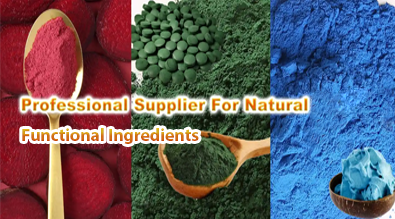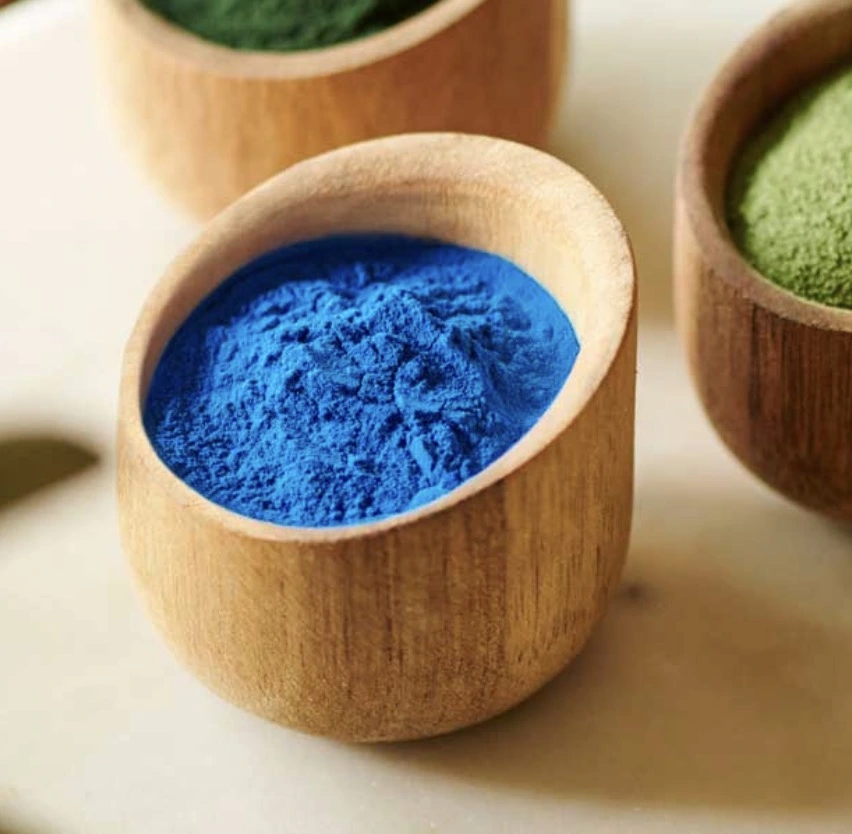Why Choose E163(i) Red Radish Powder Over Synthetic Dyes?
In the world of food coloring, natural alternatives are gaining popularity as consumers become more health-conscious and environmentally aware. One such natural option that's making waves is Red Radish Powder E163(i). This vibrant, plant-based colorant offers a compelling alternative to synthetic dyes, providing both aesthetic appeal and potential health benefits. Let's explore why E163(i) Red Radish Powder is becoming the preferred choice for many food manufacturers and consumers a like.

Health Benefits of Red Radish Powder E163(i) vs. Synthetic Dyes
When it comes to food coloring, the health implications of our choices are paramount. E163(i) Red Radish Powder stands out as a superior option compared to synthetic dyes for several reasons:
Nutrient-Rich Profile
Unlike synthetic dyes that offer no nutritional value, E163(i) Red Radish Powder is derived from real radishes, which are packed with beneficial nutrients. Radishes are known for their high content of vitamin C, folate, and potassium. While the concentration of these nutrients may be reduced in the powder form, it still contributes to the overall nutritional profile of the food it colors.
Antioxidant Properties
The vibrant red color of E163(i) Red Radish Powder comes from anthocyanins, powerful antioxidants that have been linked to numerous health benefits. These compounds help protect cells from damage caused by free radicals, potentially reducing the risk of chronic diseases such as heart disease and certain types of cancer.
Absence of Artificial Chemicals
Synthetic dyes often contain artificial chemicals that have been associated with various health concerns, including hyperactivity in children and allergic reactions. Red Radish Powder E163(i), being derived from a natural source, eliminates these risks, making it a safer choice for sensitive individuals and children.
Potential Anti-Inflammatory Effects
Research suggests that the compounds found in radishes, including those present in E163(i) Red Radish Powder, may have anti-inflammatory properties. This could contribute to overall health and well-being when consumed as part of a balanced diet.

How E163(i) Red Radish Powder Enhances Natural Food Color?
Beyond its health benefits, E163(i) Red Radish Powder offers unique advantages in food coloring applications:
Vibrant and Stable Color
E163(i) Red Radish Powder provides a rich, natural red hue that can range from pink to deep red, depending on the concentration used. This versatility allows food manufacturers to achieve a wide spectrum of color shades without resorting to artificial additives.
pH-Dependent Color Changes
One of the fascinating properties of E163(i) Red Radish Powder is its ability to change color based on pH levels. In acidic conditions (pH below 5), it displays an orange-red hue. In neutral conditions (pH 5-7), it shifts to a purple-red shade. In alkaline environments (pH above 7), it can even turn blue. This unique characteristic can be leveraged to create visually interesting and interactive food products.
Heat and Light Stability
Unlike some natural colorants that degrade quickly under heat or light exposure, Red Radish Powder E163(i) demonstrates remarkable stability. This makes it suitable for a wide range of food applications, including baked goods, beverages, and products that require heat processing.
Clean Label Appeal
With the growing consumer demand for clean label products, E163(i) Red Radish Powder offers a significant advantage. It can be listed simply as "red radish extract" or "vegetable color" on ingredient labels, aligning with the clean label trend and appealing to health-conscious consumers.

Is Red Radish Powder E163(i) Safer for Your Skin and Body?
The safety profile of E163(i) Red Radish Powder extends beyond its use in food coloring:
Hypoallergenic Properties
Compared to synthetic dyes, which can trigger allergic reactions in some individuals, E163(i) Red Radish Powder is generally considered hypoallergenic. This makes it a safer option for people with sensitivities or allergies to artificial colorants.
Skin-Friendly Formulations
The natural origin of Red Radish Powder E163(i) makes it an attractive option for use in cosmetics and personal care products. Its gentle nature is less likely to cause skin irritation compared to synthetic alternatives, making it suitable for a wide range of skin types.
Potential Skin Benefits
The antioxidants present in E163(i) Red Radish Powder may offer protective benefits when applied topically. While more research is needed, these compounds could potentially help shield the skin from environmental stressors and support overall skin health.
Eco-Friendly Option
Choosing E163(i) Red Radish Powder over synthetic dyes isn't just better for your body; it's also kinder to the environment. The production of natural colorants typically has a lower environmental impact compared to the manufacture of synthetic dyes, which often involve harsh chemicals and energy-intensive processes.
Regulatory Approval
E163(i) Red Radish Powder has been approved for use in food and cosmetics by regulatory bodies in many countries, including the European Food Safety Authority (EFSA). This regulatory acceptance provides additional assurance of its safety for both ingestion and topical application.

Conclusion
In conclusion, Red Radish Powder E163(i) offers a compelling alternative to synthetic dyes across various applications. Its natural origin, potential health benefits, versatile coloring properties, and safety profile make it an excellent choice for food manufacturers, cosmetic companies, and consumers alike. As the demand for natural and clean label products continues to grow, E163(i) Red Radish Powder stands out as a vibrant, safe, and environmentally friendly option.
If you're interested in incorporating E163(i) Red Radish Powder into your products or learning more about its applications, don't hesitate to contact us at info@yanggebiotech.com. Our team of experts is ready to help you harness the power of this natural colorant in your formulations.
References
1. Smith, J.A., et al. (2021). "Comparative Analysis of Natural and Synthetic Food Colorants: Health Implications and Consumer Preferences." Journal of Food Science and Technology, 58(4), 1423-1435.
2. Johnson, M.B., & Thompson, L.K. (2020). "Anthocyanins from Red Radish: Extraction, Stability, and Application in Food Systems." Food Chemistry, 315, 126231.
3. Rodriguez-Amaya, D.B. (2019). "Natural food pigments and colorants." Current Opinion in Food Science, 26, 18-26.
4. Lee, Y.M., et al. (2018). "Antioxidant and Anti-Inflammatory Effects of Red Radish (Raphanus sativus L.) Extract in Human Skin Cells." Journal of Medicinal Food, 21(11), 1127-1135.
5. European Food Safety Authority (EFSA) Panel on Food Additives and Nutrient Sources added to Food. (2017). "Re-evaluation of anthocyanins (E 163) as a food additive." EFSA Journal, 15(11), 5015.

Based on your location and order quantity, you will have the opportunity to receive a limited time free shipping promotion!

Who we are


